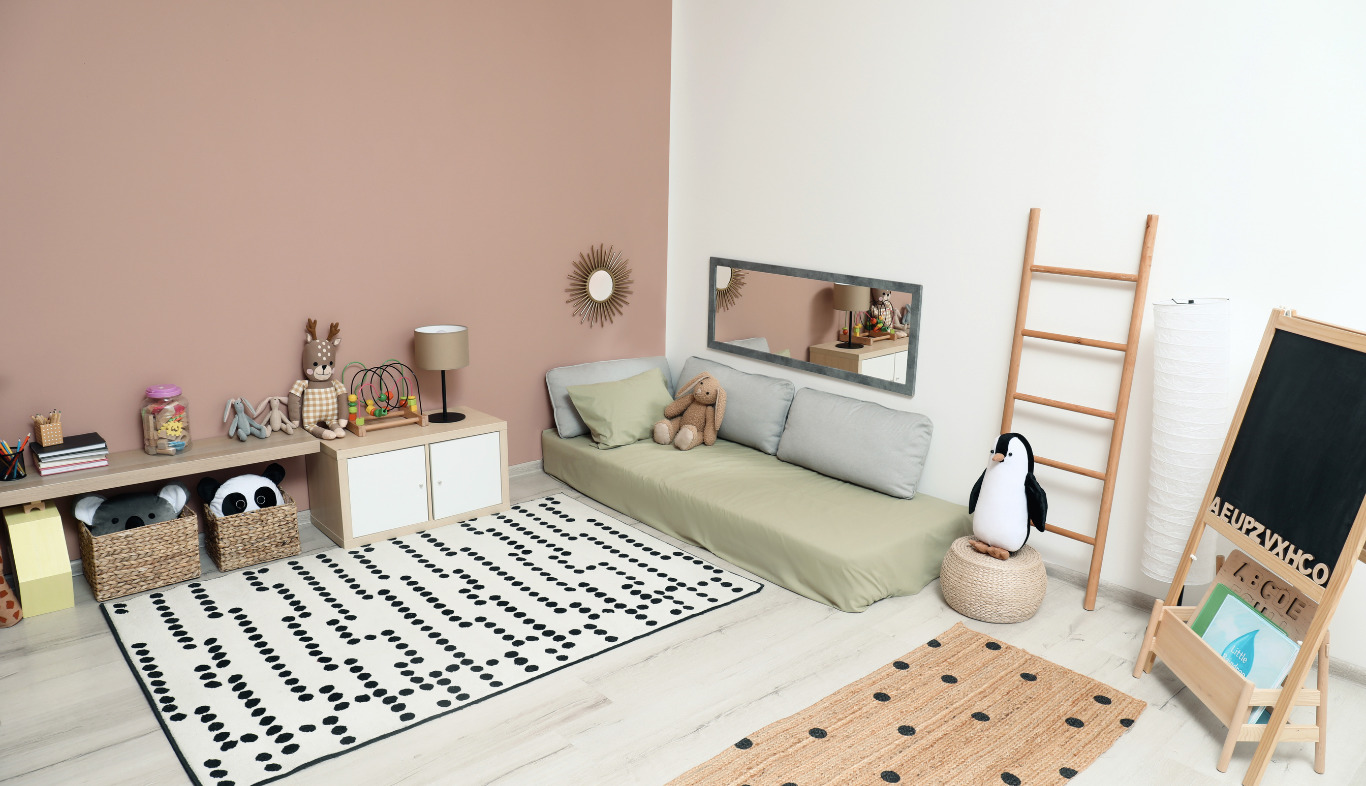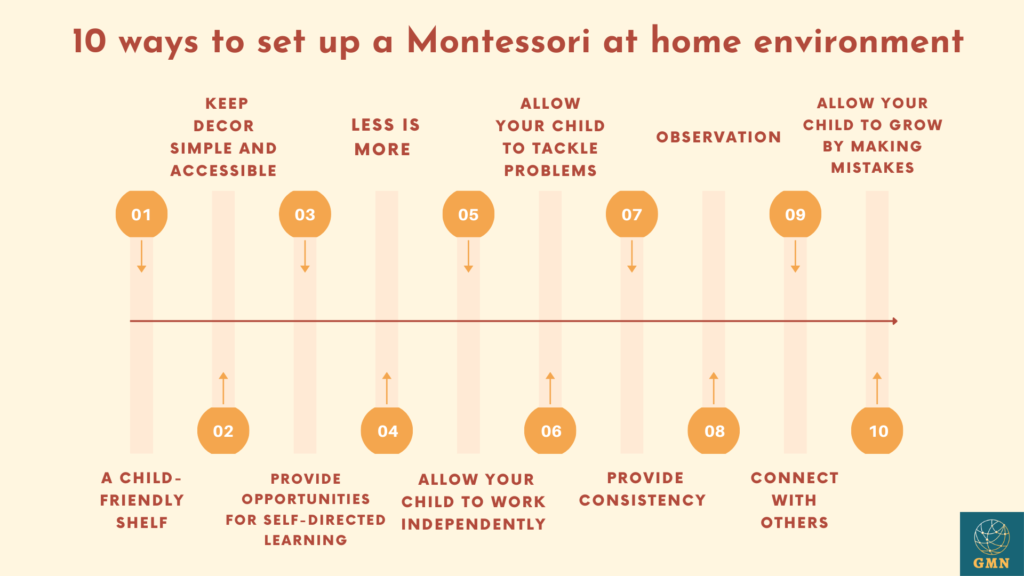Montessori education has been proven to be one of the best systems for children, as it teaches them how to learn through self-discovery and has a strong focus on the development of the whole child. The Montessori activities are thus designed to be easily set up in a home setting. It is because of its principles; Children are often better equipped to deal with situations like the pandemic.
The Montessori approach values the individual child’s learning style, interests, and abilities. An example of a Montessori classroom is provided by Dr. Gail Anderson, found in “Montessori Teaching and Learning: The Children’s Work” (2012). It describes a Montessori classroom: “During the Montessori method, teachers act as facilitators and guides rather than instructors. They provide children with materials that are age appropriate and offered these materials to them. The teacher provides guidance on what material is appropriate for the child to be learning at each stage, and then the child provides materials for the teacher.”
What do you mean by Montessori at Home?
Montessori at home is about setting up a home environment that fosters the development of independence, self-directed learning, and social skills. For example, providing a child-safe ladder that helps children to reach the kitchen counter and prepare food for themselves or a child-height wardrobe so that they can themselves reach and choose the clothes they want to put on.
It is relatively easy to set up a home environment that is Montessori in nature. In such a space, children can touch, choose, explore, and experiment with the activities used in everyday life. One can use open-ended toys or easy-to-set-up practical life activities. The idea behind it is to give the child an environment that enhances the child’s development needs, but also, it should be aligned with the Montessori principles.
10 Ways to Set up a Home Environment in Line with Montessori Philosophy
The basic principles of creating a home environment that conforms to Montessori philosophy are:
- Create a home environment that is calm, simple, and organized with the use of natural materials such as wood and clay. To do so, one can include:
- A child-friendly shelf or cabinet in the kitchen: Setting up a child-sized kitchen shelf is one of the simplest ways to encourage your children to be independent and show you trust them. It helps a child learn about food preparation, cleaning, and washing.
- Have an activity shelf: An Activity shelf is an open cabinet where various activities are kept based on the child’s development needs. It should be easily reachable to the child so that they can choose and pick the activities that they are interested in exploring. It promotes a feeling of ownership and simplifies the home environment to one where a child is given responsibility. Allowing children to keep the activity back on the activity shelf helps them learn organizational skills.
- Provide a disturbance-free area: We should provide a dedicated area in the house where they can perform an activity of their choice. It can be a chair & table or an open area.
- Have a reading place: It is also one of the simple yet effective ways to create independence. This way children have the freedom to choose, read, explore and do research.
- Have a dressing shelf: Adding a child-sized dressing shelf helps them.
You don’t need an entire room dedicated to setting up the Montessori environment at home. Even a small area can create a difference in our child’s learning path.
- Keep decor simple and accessible: Do you know we all function better in calming environments? Light-colored walls and clutter-free furniture, including posters, cabinets, beds, etc help a child focus more on activity and learning out of it. Furniture should be made of wood or natural material.
- Provide Opportunities for Self-Directed Learning: Provide opportunities for your child to have self-directed learning time. In this way, they can discover what interests them and see what sparks their curiosity.
- Less is more: Often, parents and relatives buy toys that are just for entertainment, such as soft toys, battery-operated toys, etc. These toys don’t fulfill any development needs of a child, but rather just clutter the space. Lesser toys create a calm and less chaotic home. It fulfills the development needs of a child and boosts focus and concentration. It also leads to less anxiety and more creativity for children.
- Allow Your Child to Work Independently: Allow your child the opportunity to work independently without you constantly supervising them. This will allow them the independence that they are not used to, but will also help them build their confidence and skills. Do not instruct them on what is right and what is wrong. Let them explore and learn by doing.
- Allow Your Child to Tackle Problems: Teach your child how to approach difficult situations and solve them on their own by letting them tackle problems that are challenging to them. There are many activities in Montessori that allow children to solve problems, such as opening and closing containers, opening and closing locks with a different set of keys, preparing food for themselves, and many more. These activities are simple, easy to set up, yet fulfill the purpose.
- Provide Consistency: Establish a routine for your child and make sure that you spend time with them each day. There is no need to rotate the activities every day.
- Observation: Observe the child and see whether they can complete a task without any help and at what time. What strategy are they following? Are they able to solve the problem? What are they interested in doing? And many more. Based on these observations, set their routine, and provide them with enough activities to play. Also, make sure these activities are accessible to the child.
- Connect With Others: Talk with other parents in your neighborhood and within your community to get advice on how to help your child develop their interests. It helps a child to develop social and emotional skills.
- Allow Your Child to Grow by Making Mistakes: Let your child make mistakes and learn from those mistakes. It helps a child to understand the process and develops problem-solving skills.
8 Best Tips to Set up Montessori at Home
- Use furniture keeping children in mind.
- Create an environment that is engaging, stimulating, and aesthetically pleasing.
- Have activities and materials set up in trays.
- Prepare the environment by providing age-appropriate activities arranged on the shelf.
- Create a place for everything and everything in its place.
- See the space through the children’s eyes.
- Rotate the activities frequently.
- Create a space where you can do things without needing assistance from others.
Why Should We set up Montessori at Home?
Each one of us will agree that a child’s learning path starts at home and parents are the front line of educating children. They are the first teacher that children are exposed to. Children grasp and learn best from their home environment. They apply the same learning in later years of development. The Montessori method also follows the same concept, by providing opportunities for children to do hands-on activities in a stimulating environment.
Research has shown that children who are raised in an environment that honors the child have better social skills, are more creative, and are more self-sufficient than those who aren’t. In order for a child to grow and develop in the best manner, parents should provide a home environment that is conducive to learning.
Benefits of Setting up a Home Environment in Line with Montessori Principles
Setting up Montessori at home helps us to provide our children with more meaningful and engaging activities.
- It helps to create a space that is chaos free.
- It teaches children the importance of various activities that are required to do daily chores.
- It helps in making a child independent to do every task.
- It boosts a child’s concentration and teaches them to become responsible in each environment.
- It helps to build spatial awareness.
- It allows the child to achieve a skill better with more focused activities.
Final Words
Setting up a Montessori home can be very rewarding for both parents and children. I hope these ideas serve as inspiration to make a few changes today and set up your home environment that promotes independence to do daily chores. In our homes, we can always work to make things more accessible, attractive, and engaging for our children.











